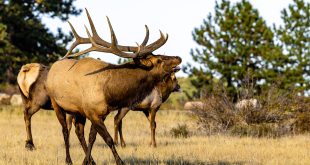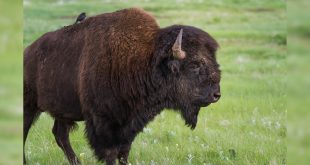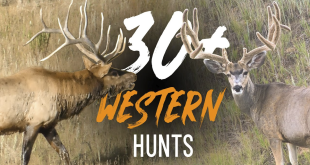
Recent new wildfires in southern Colorado like the 50-square-mile “416” fire northeast of Durango that is only 15% contained highlight what is shaping up to be a bad year for fires and drought in the West. Just recently, the San Juan National Forest closed Tuesday for the first time in its history. Mancos State Park and seven wildlife areas in southern Colorado have closed. In southern Wyoming a fire has burned 17 square miles as hot and windy conditions continue. Those states are not alone. Look at the most recent fire map below. The West is ablaze.
2018 Wildfire Map as of June – https://www.fireweatheravalanche.org/fire/?archive=2018

You can see wildfires in every western state so far this year, but so far it is more prevalent in the southern states. Compare that to last year when nearly all the fires were in the Northwest (gray symbols are for fires no longer burning, red is for large active fires at the time of the map and yellow are other active fires.
2017 Wildfire Map – https://www.fireweatheravalanche.org/fire/?archive=2017

It’s no wonder the southern states are being hit harder. Here’s the June 5 US Drought Monitor map for the West.
http://droughtmonitor.unl.edu/CurrentMap/StateDroughtMonitor.aspx?West

For Arizona, New Mexico, southern Utah or south of I-70 in Colorado, this is not the picture you want to see. Lack of snow was near long-term record lows and rainfall since has been generally sparse. In Colorado’s famed Gunnison Valley, only 1974-76 had less snowfall over the last 35 years. If current trends continue, you are going to see more and larger wildfires before the summer is over.
Strategy
While fires are generally good for wildlife in the long term so long as they don’t burn too hot from piles of dead, downed timber where logging has been prohibited for a long time, in the short run, this could mean your honey hole will be a blackened landscape. You have got to adapt.
Scout new areas – Obviously, fires drive big game to other areas, but drought can too. You may need to really ramp up your scouting late this summer if your area is affected by either fires or drought.
Find the water – Water is going to be at a premium, especially for elk and antelope that must drink often. Call the BLM or Forest Service and ask for a hydrography map of your area that will show water sources. Talk to them about what areas have durable water sources like springs. Go on Google Earth and set the time back to the last drought period, say September 2012, and see what water didn’t dry up. This is the upside – you may find animals to be more concentrated this year near.
Concentrate on north slopes – Southern slopes may be burned up this fall and offer little quality feed. On the other hand, north-facing slopes tend to have more tree cover and shade and water. Elk may be holed up there in mid-day anyway for sanctuary, and if that is where the food and water is, they may not leave it. You may have to do some still-hunting this year to be successful on elk in the southern states.
Sit over water – You may be a spot-and-stalk guy, but this year water is going to be magnet. Be there.
Figure glassing may be tough – Long-range glassing in many areas may be tough because of smoke. So, Plan on more hiking than usual and shorter views. Make sure the sun is at your back because the haze is going to be highlighted otherwise.
Go west – The driest areas are the rain shadows east of mountain ranges and open, high desert. If you have an OTC tag or your area is large enough to choose which side of a range to hunt, favor the western (rainier) side.
Go high – Higher elevations are obviously not as hot and tend to get more precipitation. You may need to hunt higher this year for deer and elk.
Find isolated water for antelope – This is always a good idea, but this year, your best shot at a good buck may be even more dependent on isolated water.
Lower your expectations – Unless you can find a great area for moisture, antler size is probably going to be down. For pronghorn, who grow much of their horns in the winter when conditions were extremely mild, may not suffer as much but you may find that horns are shorter.
Take plenty of water – Don’t you be the species that runs into trouble for lack of water.
Bottom line – get scouting, because this year is likely to require a different strategy than last year.
 Eastmans' Official Blog | Mule Deer, Antelope, Elk Hunting and Bowhunting Magazine | Eastmans' Hunting Journals
Eastmans' Official Blog | Mule Deer, Antelope, Elk Hunting and Bowhunting Magazine | Eastmans' Hunting Journals





Seriously, 50 sq/mi burned with no end in sight and you are worried about antler growth!? How about habitat and food loss. Antlers aren’t everything?
The title wasn’t mine, but the point of the article was how to adapt your strategy so you can still find bucks with good antler growth this year. For the future, fires are generally great for forage, really, they are necessary to get rid of overly mature forests with little under-story browse or edges as well as bushes that have become mature and too woody for good browse. The problem with too many areas in the West is the lack of occasional fires and the excessive fallen timber from no logging that sometimes results in fires so hot they sterilize the ground instead of replenishing it.
Excellent article. The data is showing the conditions and the article is informing the hunting community with recommendations to adapt.
Fire is neither good nor bad. Fire is with us. I fought fire for 40 years. Light burns are great for wildlife and forage in general. Hot, stand replacement fires can take decades to recover. We put out way to many fires in the past 100 plus years, now it will haunt us as the west heats up. We still waste money, time, and peoples lives fighting fire. Smokey bear is an icon past his time. We need to look at the big picture in the future. We need to stop protecting homes in the wildland urban interface that are undefendable in a fire situation. In my experience, most homes lost were the fault of the landowners complete disregard for the maintenance of the defensible space around there home. Sorry for the digression. We must adapt or pay the consequence.